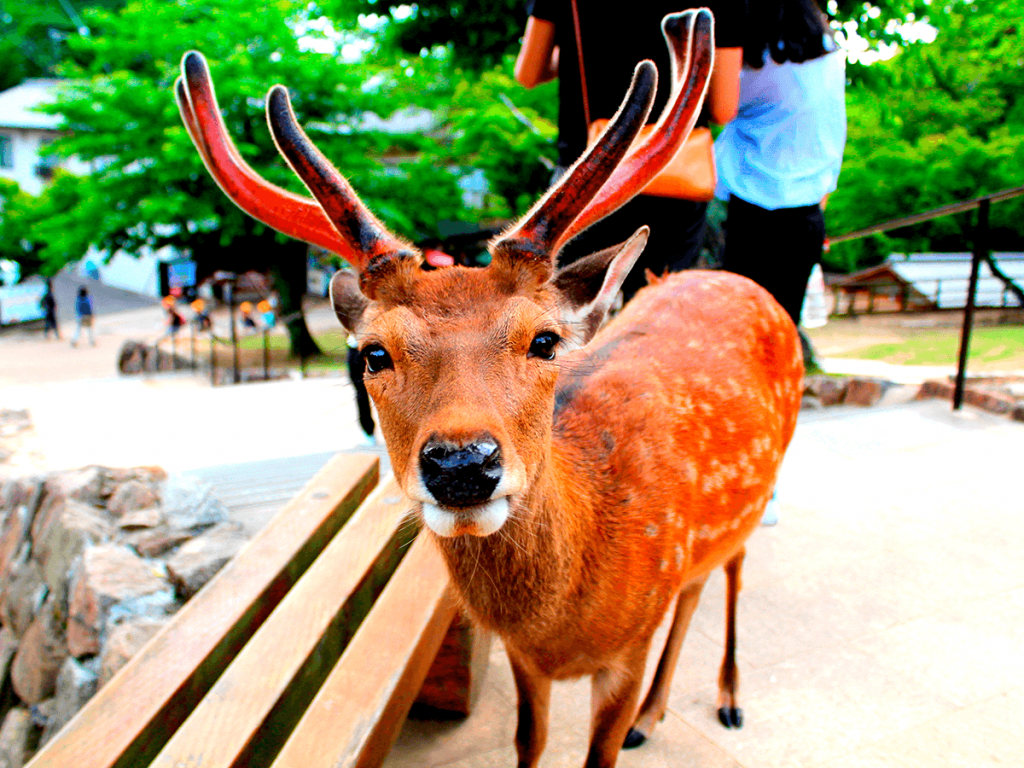Nara Prefecture, home to Japan’s first capital city, is now best known for its photogenic temples and its equally photogenic – if aggressive – deer. There may be more than 100 fewer of the latter by next year.
The deer population at Nara Park is estimated at about 1,200, and these animals seem content to spend their time around Nara Park, roaming the temple grounds and being fed by tourists. However, there is a growing number of the deer in areas beyond the park, where they eat planted bamboo, rice, fruits, and vegetables, and are a nuisance to local farmers.
However, because the deer are believed to be divine messengers of the Kasuga Taisha shrine, a World Heritage Site, and were declared national treasures in 1957, residents have been limited in their options for dealing with the problem. (This isn’t just an issue in Nara either; according to the agricultural ministry, wild deer caused roughly ¥6 billion, or $54 million, in crop damage during fiscal 2014.)
Last year, it was decided that the Nara government could begin a capturing program, but only if they applied to the Cultural Affairs Agency in Tokyo. The application was granted and the program began this week.
A new zoning system for the Nara Park area was established last year, and it will be used coordination with the capturing program. As explained by The Japan Times last year, four zones have been defined: a “priority protection zone” that includes all of Nara Park, a “semipriority protection zone,” a “borderline zone,” and a “management zone.” In the two protection zones, patrols will be conducted to treat injured deer, and no deer will be captured. In the borderline zone, deer that are damaging crops will be captured and other deer will be protected. Finally, deer in the management zone can be captured and killed.
Permission has been granted for the Nara government to capture 120 deer in box traps in the eastern districts of Tawara and Higashisato, which lie outside the park grounds. According to the Washington Post, the captured deer will then be killed.
Previous attempts to control the deer population in Nara Prefecture have met with public disapproval both inside and outside the prefecture, and a park official said that there had already been some complaints about the cull from locals, but stressed that any deer close to Nara Park would not be harmed. As quoted in the Asahi Shimbun, a prefectural government official said, “Nara has a long history of people living side by side with deer in harmony … We want to continue efforts to coexist in peace while preventing damage to crops.”
Deer within the park grounds cause some trouble of their own: last year, 121 people were injured by deer at the park, according to the Mainichi Shimbun. Of these, 79 were injured while feeding the deer shika senbei, special “deer crackers” that are sold around the park. Injuries didn’t tend to be severe – 88 people were treated with disinfectant and a bandage, and 10 were bruised – but one broken bone was reported, and in six cases, stitches were required.








